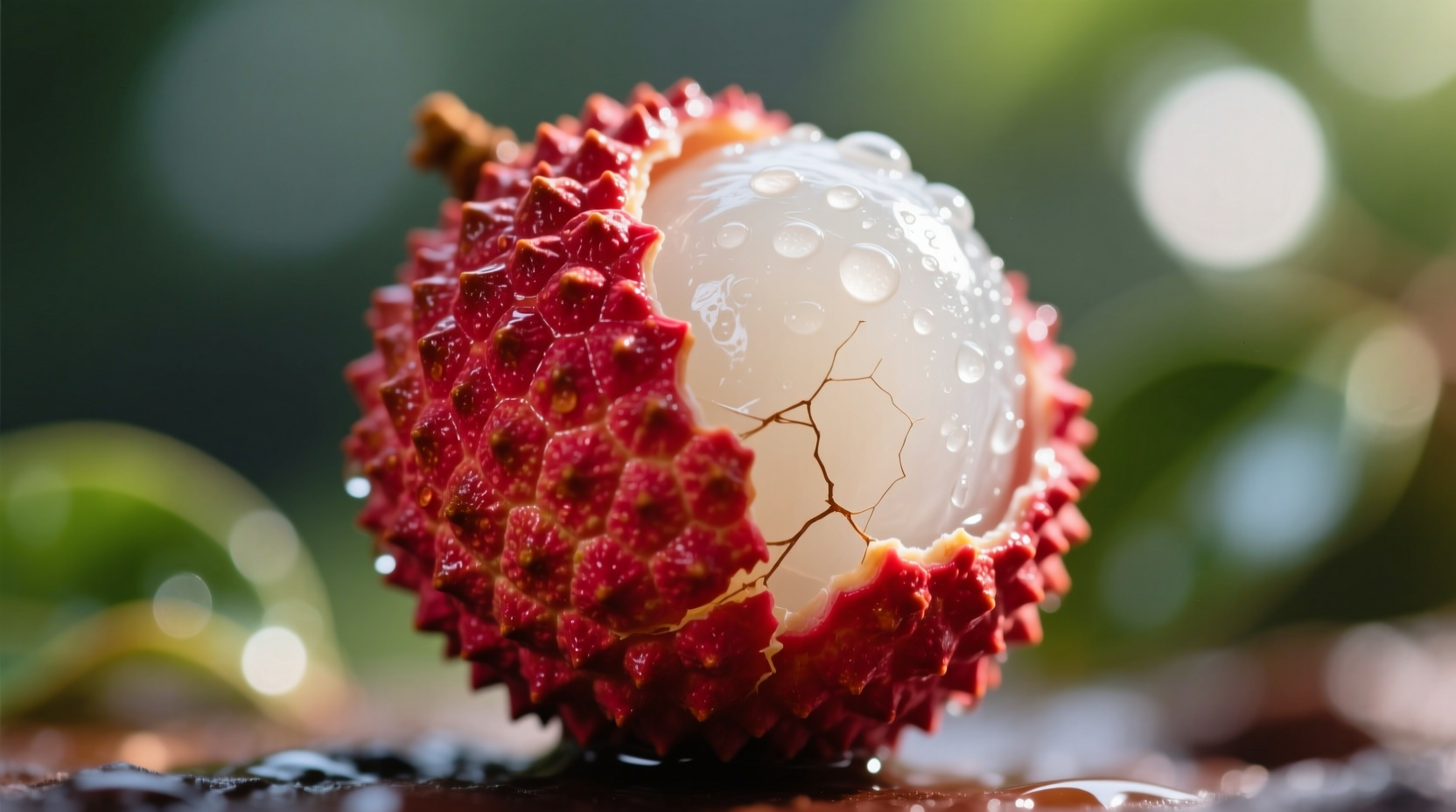If you've ever wondered what does a lychee taste like, you're in for a sensory adventure. This exotic fruit, native to southern China and now cultivated across tropical regions, provides a uniquely complex flavor profile that has captivated palates for centuries. Understanding its taste characteristics helps you appreciate why lychee has become a prized ingredient in both traditional and modern culinary applications.
Your Complete Guide to Lychee's Flavor Experience
Breaking Down the Lychee Taste Profile
When evaluating what does a lychee taste like, we need to consider multiple sensory dimensions. The fruit's flavor isn't monolithic but rather a harmonious blend of several elements that work together to create its distinctive character.
The primary taste sensation is a pronounced sweetness balanced by mild acidity. Unlike many tropical fruits that lean heavily toward sugar dominance, lychee maintains a delicate equilibrium that prevents it from tasting cloying. This balance makes it exceptionally refreshing, particularly in warm climates where it's traditionally enjoyed.
According to agricultural research from the University of Florida's Institute of Food and Agricultural Sciences, lychee contains volatile compounds including linalool and geraniol that contribute to its characteristic floral aroma. These same compounds explain why many people detect subtle rosewater notes when enjoying fresh lychee.
| Flavor Dimension | Description | Common Comparisons |
|---|---|---|
| Sweetness Level | Moderate to high (15-20° Brix) | Sweeter than grapes, less sweet than mango |
| Acidity | Mild citrus undertones | Similar to white grapefruit without bitterness |
| Floral Notes | Pronounced rosewater and荔枝 blossom | More floral than rambutan, less than longan |
| Texture | Translucent, jelly-like flesh | Similar to peeled grape with firmer bite |
How Ripeness Transforms Lychee Flavor
Understanding what does fresh lychee taste like requires examining how ripeness affects its flavor development. This context boundary significantly impacts your tasting experience:
- Underripe lychee (pink to light red skin): Tastes noticeably tart with green, almost vegetable-like notes. The flesh remains firm and less juicy.
- Perfectly ripe lychee (bright red to dark pink skin): Delivers the ideal sweet-floral balance with maximum juiciness. The skin yields slightly when gently squeezed.
- Overripe lychee (brownish skin): Develops fermented notes with reduced acidity. While still edible, the texture becomes mushy and the distinctive floral notes diminish.
The USDA Agricultural Research Service notes that lychee continues to develop sugars after harvest, but the window for optimal flavor is narrow—typically 2-3 days at room temperature before quality declines significantly.
Comparing Lychee to Similar Fruits
When people ask how would you describe lychee taste, they often want familiar reference points. Here's how lychee compares to other fruits you might know:
While frequently compared to rambutan and longan (its botanical cousins in the soapberry family), lychee stands apart with its more complex flavor profile. Rambutan tends to be milder and less floral, while longan has a simpler, honey-like sweetness. The distinctive rosewater note in lychee has no direct equivalent in common Western fruits, though some detect similarities to Muscat grapes combined with subtle watermelon rind notes.

Selecting the Best Lychees for Optimal Flavor
Your experience with what does a lychee taste like depends heavily on proper selection. Follow these practical tips:
- Skin color: Look for bright red to dark pink hues. Avoid greenish or brown-spotted specimens.
- Skin texture: Should feel slightly rough but not dry or cracked. The spiky exterior should be pliable, not brittle.
- Weight: Heavier fruits typically contain more juice and developed flavor.
- Aroma: A subtle floral scent indicates ripeness. No smell suggests underripeness; strong fermented odor means overripeness.
Unlike many fruits, lychee doesn't continue ripening significantly after harvest. What you buy is essentially what you get in terms of sugar development, though acidity may mellow slightly over a day or two at room temperature.
Culinary Applications That Highlight Lychee's Unique Taste
Understanding why does lychee taste so good in various preparations helps you maximize its potential:
- Fresh consumption: The purest way to experience lychee's delicate flavor. Chill for 30 minutes before eating to enhance the refreshing quality.
- Cocktails and beverages: Lychee martinis and mocktails showcase its floral notes without overwhelming them.
- Desserts: Pairs beautifully with citrus, berries, and light creams that complement rather than mask its subtle profile.
- Savory applications: Try in fruit salsas with jalapeño for a sweet-heat contrast that highlights lychee's complexity.
Professional chefs note that lychee's flavor holds up best in cold preparations. High heat tends to diminish its delicate floral notes, making it ideal for sorbets, granitas, and chilled soups rather than baked goods.
Preserving Lychee's Distinctive Flavor
To maintain the characteristic lychee aftertaste characteristics you've come to expect:
- Refrigerate in a perforated plastic bag for up to 5 days
- Peel and freeze in simple syrup for longer storage (up to 6 months)
- Avoid storing near strong-smelling foods as lychee readily absorbs odors
- Consume within 24 hours of peeling for best flavor experience
The enzymatic browning that occurs after peeling doesn't significantly affect flavor in the first few hours, but the visual change can be off-putting. A quick dip in citrus juice can help maintain appearance without altering the delicate taste profile.
Global Appreciation of Lychee's Unique Taste
Lychee's distinctive flavor has earned it a special place in culinary traditions worldwide. In China, where it's been cultivated for over 2,000 years, lychee symbolizes love and romance. The fruit's brief seasonal availability (typically May-July in the Northern Hemisphere) creates anticipation for its return each year.
Culinary historians note that lychee was so prized in ancient China that emperors would have fresh fruits transported by relay horseback to the capital—a testament to its exceptional flavor that warranted such effort. Today, lychee remains a featured ingredient in traditional Cantonese desserts and modern mixology worldwide.











 浙公网安备
33010002000092号
浙公网安备
33010002000092号 浙B2-20120091-4
浙B2-20120091-4